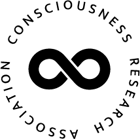
Quantum Physics
Few theories of quantum mechanics
1. Roger Penrose and the Orch-OR Theory
Publication: Penrose, R. (1989). The Emperor’s New Mind; Penrose, R., & Hameroff, S. (2014). Consciousness in the Universe: A Review of the Orch-OR Theory.
Key assumptions:
Consciousness is not a product of classical brain processes but arises from quantum superposition states in neuronal microtubules.
The reduction of the quantum wave function (Orchestrated Objective Reduction – Orch-OR) may be the mechanism leading to conscious experiences.
Quantum information might survive biological death, suggesting the possibility of consciousness existing beyond the body.
Experimental references:
Although the hypothesis has not been definitively proven, studies on quantum coherence in biological systems conducted by Gregory Scholes (Scholes et al., 2010, Nature) suggest that quantum mechanisms can exist in biological conditions.
2. Eugene Wigner and the Role of Consciousness in Quantum Measurement
Publication: Wigner, E. (1961). Remarks on the Mind-Body Question.
Key assumptions:
Wigner argued that the act of quantum measurement requires a conscious observer.
Consciousness may be a fundamental element influencing wave function collapse.
The thought experiment "Wigner's Friend" suggests that reality does not exist in a definite state until observed by a conscious being.
Experimental references:
Studies on the "delayed-choice experiment" (Wheeler, 1978) suggest that an observer’s choice may influence past quantum events.
3. John von Neumann and the Influence of Consciousness on Wave Function Collapse
Publication: Von Neumann, J. (1932). Mathematical Foundations of Quantum Mechanics.
Key assumptions:
In classical quantum mechanics, a superposition state ends when a measurement occurs, but von Neumann suggested that wave function collapse may be caused by the observer's consciousness.
If consciousness is necessary to "realize" reality, it could exist beyond physical systems.
Experimental references:
Double-slit experiments confirm that the presence of an observer influences the outcome.
Interpretations of quantum measurement theory remain an open question in theoretical physics.
4. Henry Stapp and the Quantum Mind
Publication: Stapp, H. (2007). Mindful Universe: Quantum Mechanics and the Participating Observer.
Key assumptions:
Consciousness is an integral part of quantum reality.
Quantum processes in the brain may influence decisions and free will.
Consciousness may exist as quantum information independent of matter.
Experimental references:
Experiments on quantum correlations (Bell, 1964) indicate that information can be instantaneously transferred between entangled particles, which some interpret as a possible mechanism for "quantum consciousness."
Conclusion
There is no definitive experimental proof that consciousness exists beyond the body, but studies by leading quantum physicists suggest that:
Consciousness may play a key role in wave function collapse (Wigner, von Neumann).
Quantum mechanisms may be the foundation of consciousness (Penrose, Hameroff, Stapp).
Quantum information may exist independently of matter, potentially opening the door to further research on consciousness after death.
Consciousness Research Association
The Association for Consciousness Research
Contact
contact@conreas.com
© 2024. All rights reserved.
